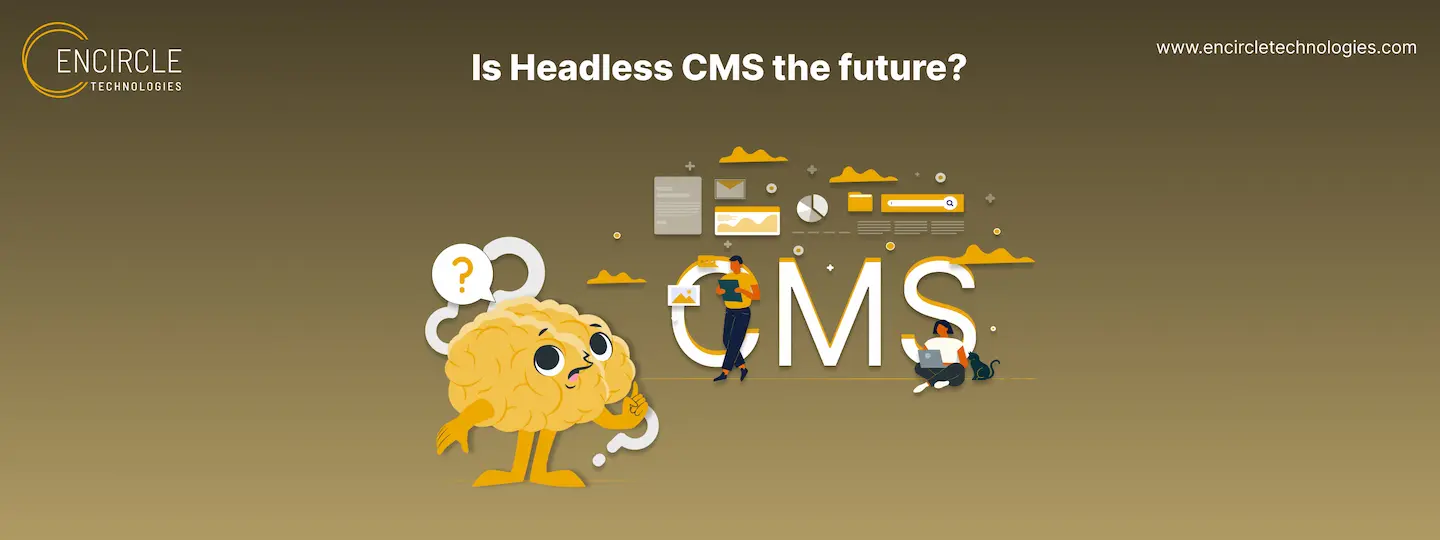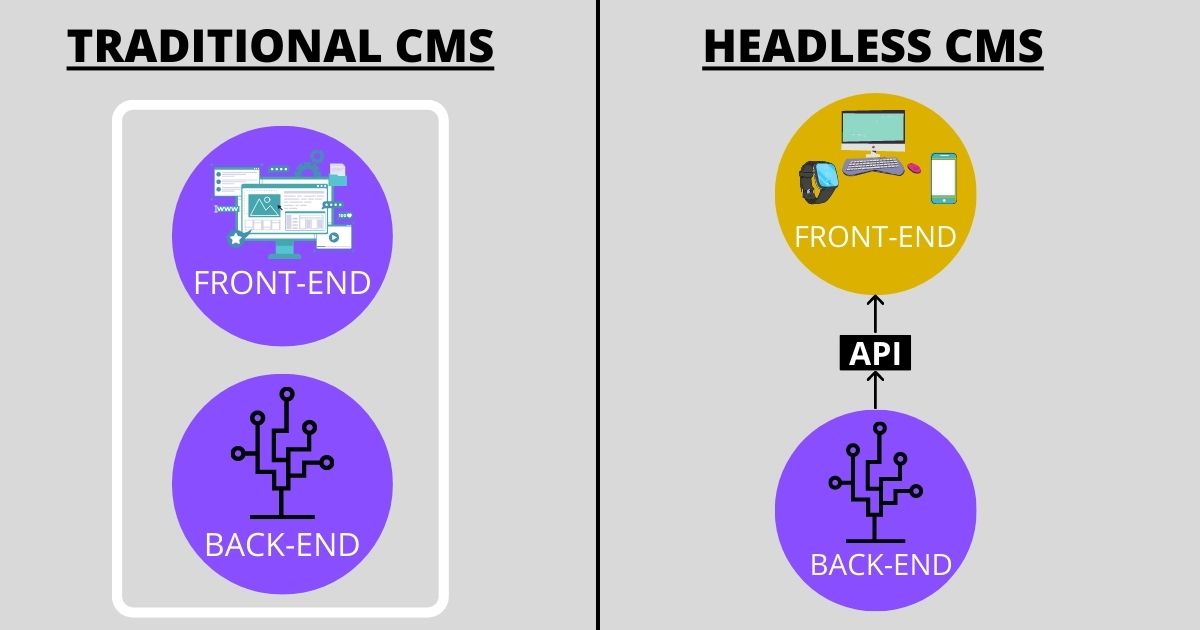While traditional CMS (also known as “monolithic”) has a frontend and backend coupled together, headless CMS is a content management system that separates the backend from the frontend. It connects both via APIs (application programming interfaces).
Headless CMS has become a buzzword these days. Is it a fad or it is here to stay?
Headless CMS is the future. With an omnichannel approach and great room for flexibility, it provides the ability to deliver your web content across all channels, including smartphones, wearables, AR/VR, and IoT. This is what makes it future-proof.
Advantages of Headless CMS
Let’s talk about some advantages of using a headless CMS:
Omnichannel approach
One of the main pros of headless CMS is its ability to deliver web content across multiple channels. With headless CMS, you don’t have to manage your web content separately for different channels like smartphones, TV, wearables, AR/VR, etc.
Scalability
As compared to traditional CMS, headless CMS is a lot more scalable. As the front-end and back-end both are separated, any issue in the backend won’t impact your website’s front end. It means your team can work on your website’s environments without having to worry about its downtime.
Security
With the presentation layer being separated, going headless would enhance your website security.
Developer-friendly
Going with a headless content management system provides the flexibility to choose the programming language, framework, and tools of your choice. Let’s say, if the developer is comfortable with Javascript instead of PHP, headless CMS makes it possible. Unlike traditional CMS, the developer doesn’t have to stick to the tool or framework you are not comfortable with.
Faster TTM
TTM (time to market) is the amount of time it takes for a product from conception to making it available. With the changing trends and consumers’ preferences, faster TTM can stand you apart from the competitors. With headless CMS, you would be able to adopt the changing trends rapidly.
Faster loading speed
If your website takes too long to load, it will increase the bounce rate. People visiting your website expect it to load within 2-3 seconds. Under headless CMS, the website will run front-end code only (which is important for users). As a result, it will deliver a better user experience.
Disadvantages of Headless CMS
From flexibility to faster time to market, there are so many benefits of using headless CMS. However, there are several downsides as well:
Expensive
As compared to traditional CMS, headless CMS is expensive. With headless CMS, the cost won’t be limited to the CMS. You will also be paying for front-end infrastructure, developers, etc.
Not for non-technical
For non-tech users, it’s better to go with traditional CMS because headless CMS is not user-friendly in terms of technical aspects. To go headless, you will require skilled developers.
Final Thoughts
The future of content management is headless. Headless CMS provides complete freedom by separating the website’s front-end and back-end. It connects both through APIs.
While traditional CMS is quite rigid, headless CMS ensures a better developer and user experience by providing the ability to build a website with rich UI components, an omnichannel approach, and a faster-loading speed.
Note that, headless CMS isn’t a wise option for everyone. Let’s say, for a smaller website with a few pages, traditional CMS is more convenient.
Have more questions regarding headless CMS? Reach out to us at support@encircletechnologies.com
Also Read: The Pros and Cons of Headless WordPress



